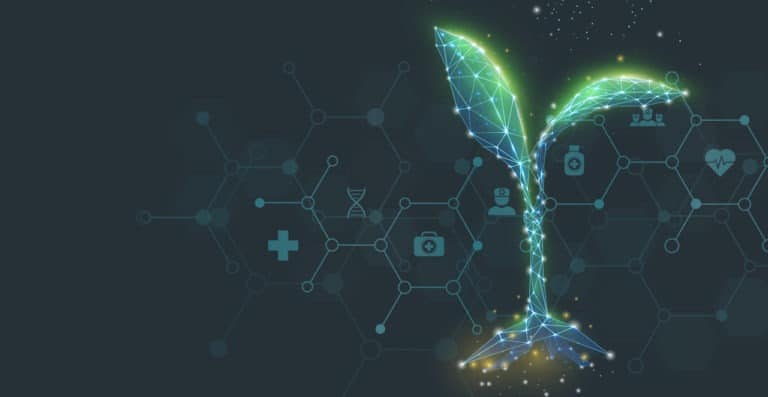
Many would agree that the life sciences industry has been overlooked in global efforts to combat climate change. Because this industry is often seen as relatively benevolent, ‘green’ initiatives have focused on the non-renewable energy sector, transportation, agriculture and manufacturing – allowing non-sustainable practices like the high levels of pollution generated by the broader life sciences sector to avoid the spotlight. That’s now changing.
It’s Time the Life Sciences Industry Made Sustainability Commitments
The sustainability movement is more than 50 years old. It was founded in the late 1960s and early 1970s by individuals concerned that the growing population, diminishing natural resources, and the effects of pollution threatened our survival.
Fast forward to today, and an increasing number of companies are opting for sustainable supply chain management. More than ever before, there is strong interest in scrutinizing a company’s track record in upholding the wellbeing of individuals across the entire supply chain. Furthermore, sustainable operations secure the long-term viability of a business and provide it with a “social license” to operate.
Generally, the push for sustainability is being driven by governments and NGOs, who over the years have made the environment a priority. For example, the UN has identified pharmaceutical pollution as an emerging global priority under its Strategic Approach to International Chemicals Management (SAICM). The strategy identifies six potential action areas covering all stages of the pharmaceutical life cycle. These actions are designed to raise awareness and promote prudent use, improve training and risk assessment, gather monitoring data, incentivize ‘green design,’ reduce emissions from manufacturing, reduce waste and improve wastewater treatment.
Consumer sentiment is another major factor driving the move toward sustainability. As the balance of power between companies and consumers continues to tilt toward the latter, more and more companies are finding it valuable in the long term to adhere to the social and environmental stewardship expected by the market.
It makes sense that life sciences is undergoing increased scrutiny. The research, development, production, supply and distribution of life sciences products like pharmaceuticals and medical devices consume large quantities of natural, human and economic resources.
The Response from the Industry
While critics are plentiful and vocal, overall the drive toward sustainability is viewed as beneficial to the life sciences industry. Dr. Robert Paffen, Risk Consulting Leader with PwC Europe, summarizes the situation with blunt but understated elegance:
“It is beneficial for pharmaceuticals and life sciences companies to take a step towards sustainability. Firms that pursue a sustainable strategy and solidify their reputation as a sustainable company will gain the trust of governments, global institutions, and other stakeholders – partners on whom the long-term success of the industry depends.”
However, many companies face short-term pain to achieve long-term gain. Often they must make substantial investments up front to research, engineer, and implement sustainable processes.
Sustainability in Life Sciences through Technology
Here’s a closer look at some industry challenges and the strategies being adopted to overcome them.
Supply Chain Traceability: Companies in the life sciences industry rely on a complex global network of multi-tier suppliers, logistics providers and manufacturing organizations to get their products to the end consumer. In addition, the life sciences sector operates in one of the most regulated industries in the world; it must contend with strict requirements including batch-level traceability. To overcome these challenges, meet customer expectations and succeed in a competitive marketplace, life sciences companies are adopting advanced digital technologies that provide end-to-end visibility of material and labor inputs in their supply chain, from the initial supplier all the way to the end user.
Corporate Responsibility: When it comes to ensuring responsible and compliant suppliers, many life sciences companies are increasingly relying on corporate social responsibility (CSR) solutions. CSR is a strategic business initiative that can enhance a company’s financial performance and reputation while strengthening its supply network. Logility’s corporate responsibility solution offers a single, integrated system for surfacing variants between a supplier’s audit findings and self-reported scores, analyzing results, issuing corrective action plans and adjusting sourcing plans in real time based on a supplier’s progress – or lack thereof – toward sustainability objectives.
What-if Scenario Analysis: Another key challenge for life sciences supply chain executives is managing the unexpected. Logistics failures can have serious consequences in life sciences. While new medicines and medical devices are designed using sophisticated digital technologies, many of today’s supply chains operate in a landscape that’s part analog and part digital, with outdated tools that limit collaboration and visibility. And as a result, supply chain planning is error-prone. To further advance supply chain planning capabilities, companies can create a digital copy, or digital twin, of their physical supply chain. This technology accurately represents the current state of all aspects of the supply chain, such as production capacity, business capabilities, customer orders, available inventory and operational assets. Using this information in near-real time, companies can test new scenarios, analyze their impact, and implement the change in their active supply chain operations confidently.
Sustainability in Life Sciences through Digitization
Some in the life sciences industry argue intense, uninterrupted regulation is at the very least equivalent to the challenges other industries have endured and continue to endure on the road to sustainable operations. While that stance has the makings of a spirited debate, it misses the point.
Not all regulation furthers the cause of sustainability. What matters now is how quickly and thoroughly life sciences companies pursue sustainability as defined by stakeholders, not regulators. Among the challenges are the design, implementation and management of an end-to-end green supply chain, complete with compliance management and contingency plans. To achieve this, companies must embrace the full digitization of their supply chain and tools that help them monitor compliance with sustainability protocols and manage potential disruptions, large and small.


